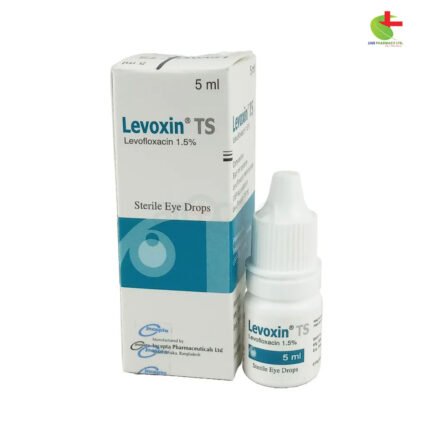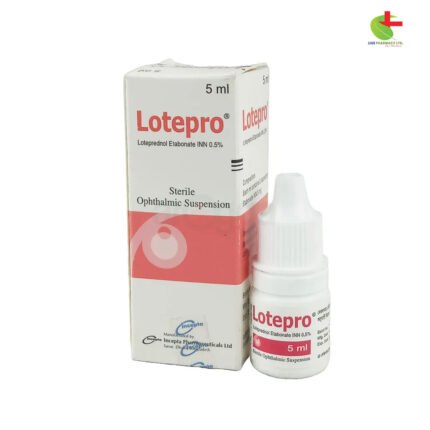Lomequin Eye/Ear Drops
70.00৳ Drop (5ml)
- Lomequin ophthalmic solution effectively treats bacterial eye infections such as conjunctivitis, blepharitis, and corneal ulcers caused by Staphylococcus aureus.
- Lomefloxacin, its active ingredient, inhibits bacterial DNA processes, demonstrating low toxicity in both systemic and topical applications.
- Recommended for adults and children over 1 year, it should be applied 2-3 times daily, with increased frequency during initial treatment.
- Consult your healthcare provider for personalized usage and potential side effects, including transient burning and allergic reactions.
 Brand
Brand
|
Incepta Pharmaceuticals Ltd |
|---|---|
 Generics
Generics
|
Lomefloxacin |
 Type
Type
|
Ophthalmic Solution |
Indications
Lomequin ophthalmic solution is designed to treat bacterial infections of the eye, including conjunctivitis, blepharitis, and blepharoconjunctivitis caused by Lomequin-sensitive bacteria. It is also effective against corneal ulcers induced by Staphylococcus aureus.
Pharmacology
Lomefloxacin, a difluorinated quinolone derivative, acts as a bacterial gyrase inhibitor, showcasing efficacy against both gram-positive and gram-negative bacteria. The systemic and topical ocular application of Lomefloxacin exhibits low acute toxicity. It disrupts essential bacterial DNA processes, including initiation, elongation, and termination phases of replication, transcription, DNA repair, recombination, transposition, and supercoiling. The primary target for quinolones is the A-subunit of bacterial gyrase (topoisomerase II). The formation of a stable complex between quinolone and the gyrase tetramer (A2B2) leads to impaired enzyme function, resulting in rapid bactericidal activity against susceptible strains.
Cross-resistance has been documented only with other quinolones, with no reported interactions with different antibiotic classes. Current clinical studies do not confirm efficacy against chlamydial infections.
Dosage
For Adults and Children (over 1 year): Instill 1 drop into the lower conjunctival sac 2-3 times daily. For initial treatment, more frequent applications may be necessary: apply 5 drops within 20 minutes or 1 drop every hour for 6-10 hours. Treatment duration typically ranges from 7 to 9 days.
Consult your healthcare provider for appropriate use.
Administration
Lomequin can be administered with or without food.
Consult your healthcare provider for appropriate use.
Interaction
To maintain optimal efficacy, avoid using ophthalmic preparations containing heavy metals (such as zinc) within 15 minutes before and after applying Lomequin. Concurrent use with bacteriostatic ophthalmic antibiotics is not recommended.
Contraindications
Do not use if you are hypersensitive to Lomequin, its excipients, or other quinolone antibiotics. Long-term antibiotic use may increase the risk of secondary fungal infections or the proliferation of resistant bacteria.
Side Effects
Transient burning sensations immediately following instillation have been reported in 4.7% of users. Although phototoxicity has not been observed with ophthalmic use, there is a possibility of photosensitization. Allergic reactions associated with systemic use, including asthma, dyspnea, urticaria, erythema, pruritus, and hypersensitivity, cannot be ruled out after topical application.
Pregnancy & Lactation
Animal studies indicate that Lomefloxacin crosses the placental barrier and is excreted in breast milk after systemic administration at a dose of 20 mg/kg. Due to a lack of clinical studies on the use of Lomefloxacin eye drops during pregnancy and lactation, this medication should only be utilized when the benefits outweigh the potential risks to the fetus or infant.
Precautions & Warnings
While isolated cases of phototoxicity have been documented following systemic use, no such effects have been noted with topical ophthalmic use. However, it is advisable to avoid excessive exposure to sunlight or UV radiation during treatment with Lomequin.
Overdose Effects
There is minimal risk of adverse effects from accidental oral ingestion, as a 5 ml bottle of Lomequin contains only 15 mg of the active ingredient, representing just 3.75% of the recommended oral daily dose for adults (400 mg).
Therapeutic Class
- 4-Quinolone preparations
- Ophthalmic antibacterial agents
Storage Conditions
Store at a temperature between 15-25°C.













Reviews
There are no reviews yet.